
Polar & Tundra Cold & Dry Biomes


Polar & Tundra Objectives:
-
Describe the climate and organisms of the polar regions, including threats to polar carnivores.
-
Describe the climate and organisms of the tundra, including plant characteristics.
Polar Biomes
This video introduces the polar regions: the Arctic and Antarctica.
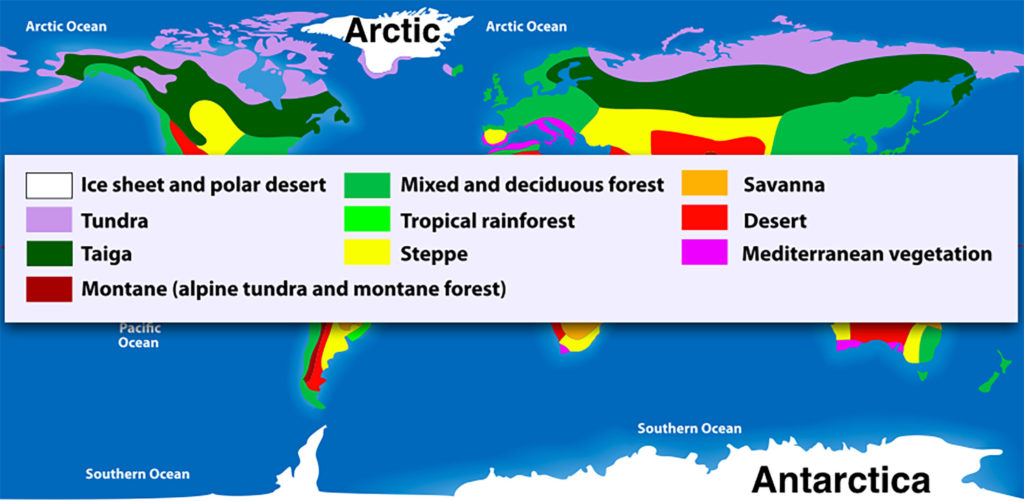
The polar regions of the Arctic to the north and Antarctica to the south receive the lowest amount of solar energy and have low temperatures as well as low precipitation.

Unlike other terrestrial ecosystems, the polar regions are dominated and defined by ice, not plants.
There are polar producers, primarily algae, with moss and lichens in limited distribution in warmer areas.
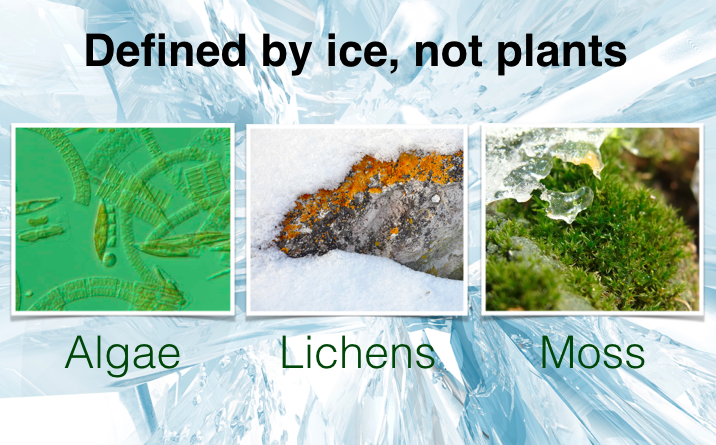
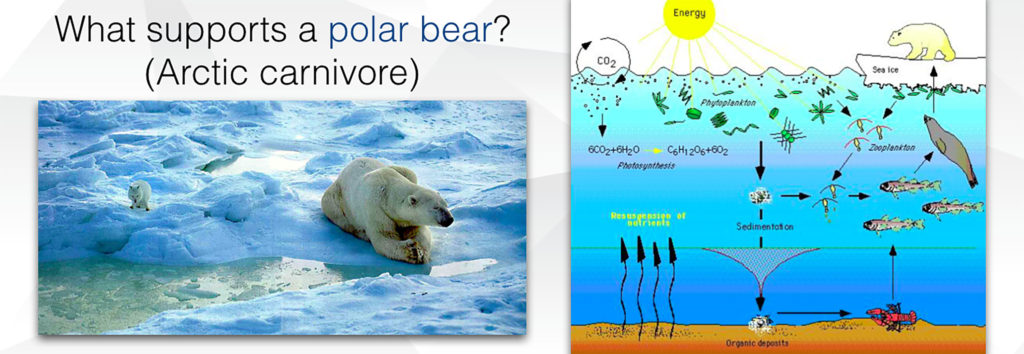
Polar bears are not eating these small producers, what ecosystem are they living off of if not the ice?
Emperor penguins live off of fish in marine food webs.

Tundra
The tundra lies directly below the Arctic. This video introduces the Tundra.
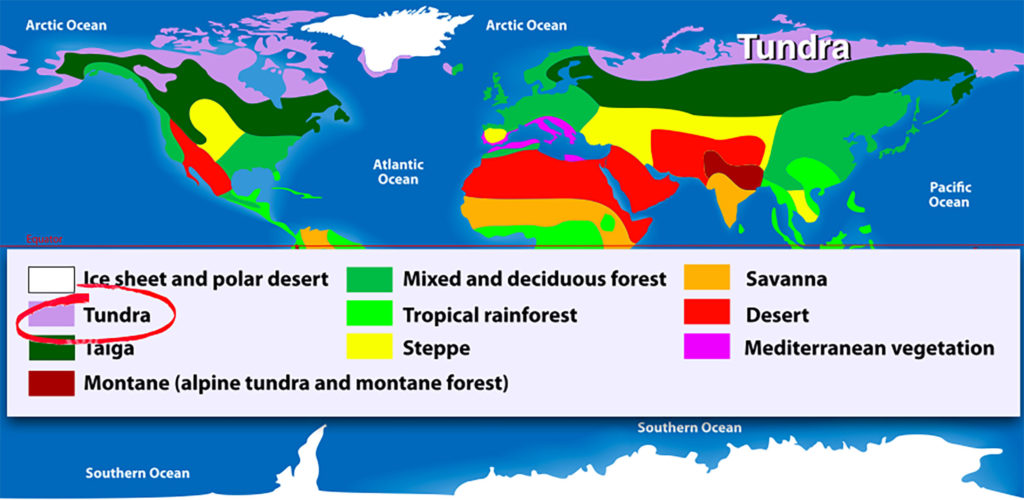
In the tundra soil, a layer of water called _____ stays frozen all year long.

The low moisture and permafrost limits plant growth; few trees exist. Plants are small and rounded with lower surfaces areas exposed to the wind and cold.
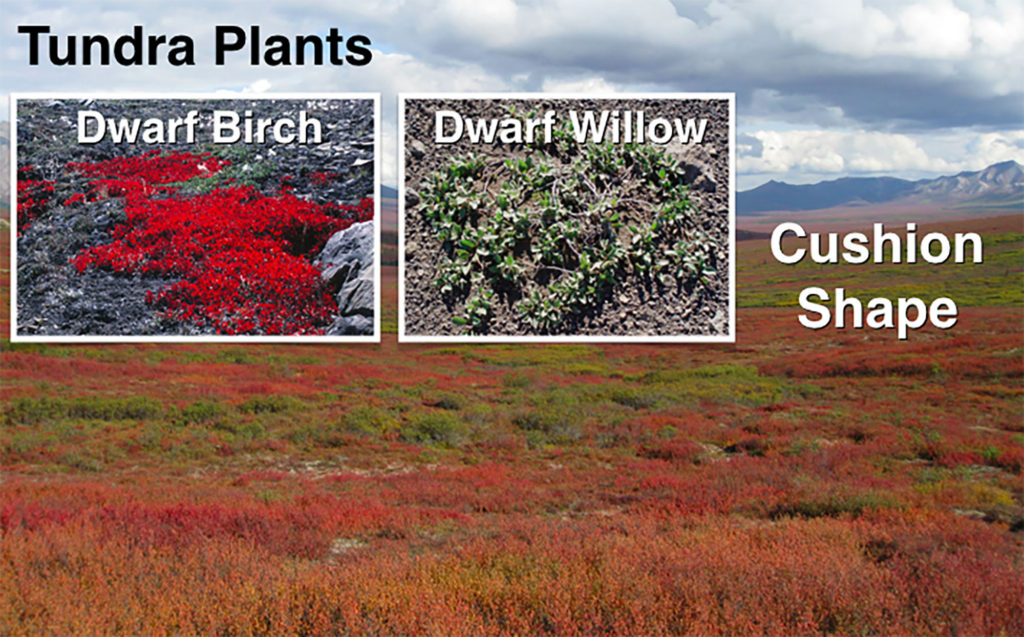

Herds of caribou, also called reindeer, can live off the moss, lichens, grasses, and small shrubs.
The next section introduces the Taiga, large coniferous forests south of the tundra.

Check your knowledge. Can you:
-
Describe the climate and organisms of the polar regions, including threats to polar carnivores?
-
Describe the climate and organisms of the tundra, including plant characteristics?



